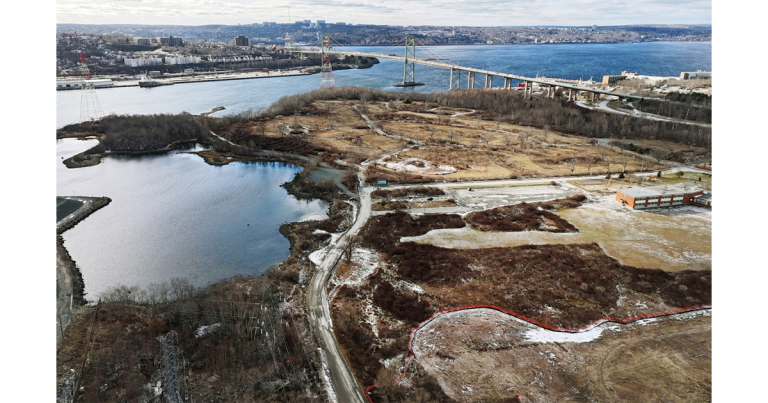Value of Building Permits Drops in August After Increases in June and July

The total value of building permits decreased 3.7% to $7.5 billion in August, following increases of 15.5% in June and 0.7% in July. The decline was attributable to lower construction intentions in most provinces, mainly British Columbia, Alberta, Quebec and Saskatchewan. Six provinces posted decreases in the value of residential and non-residential permits.
Chart 1: Total value of permits

In the residential sector, municipalities issued $4.7 billion worth of building permits, down 5.1% from July. This was the first decline in three months. Decreases were posted in six provinces, with British Columbia posting the largest decline. Ontario registered the largest increase in the value of residential building permits.
Construction intentions for non-residential buildings declined 1.3% to $2.8 billion in August, a second consecutive monthly decrease. Decreases were recorded in six provinces, led by Alberta, followed by Quebec and Saskatchewan. Ontario registered the largest increase in non-residential construction intentions.
Residential sector: Large decline in construction intentions for multi-family dwellings
Municipalities issued $2.3 billion worth of building permits for multi-family dwellings in August, down 8.3% from the previous month. The largest decrease was in British Columbia, where the value of building permits for multiple dwellings had reached a record high in July. Alberta and Nova Scotia were a distant second and third. Ontario posted the largest increase in construction intentions for multi-family dwellings.
Contractors took out $2.4 billion worth of building permits for single-family dwellings in August, down 1.9% from July. This was the first decline in three months. The decrease at the national level was attributable to lower construction intentions for single-family dwellings mostly in Ontario and, to a lesser degree, in Alberta. Conversely, Quebec and Saskatchewan saw the largest increases.
The number of new dwellings approved by municipalities declined 4.6% to 18,709 units. The decrease was attributable to multi-family dwellings, which fell 5.6% to 12,675 units, and single-family dwellings, which declined 2.4% to 6,034 units.
Chart 2: Residential and non-residential sectors

Non-residential sector: Decrease in industrial and institutional construction intentions
In the industrial component, the value of building permits declined for a second straight month, down 7.9% to $467 million in August. The decline in August was due to lower construction intentions for utilities and transportation buildings. Decreases in four provinces, led by Alberta and Quebec, offset the increases in the other provinces. Saskatchewan and Ontario recorded the largest gains.
Institutional construction intentions fell 4.3% from July to $631 million in August, following a 42.5% decrease the previous month. The decline at the national level in August resulted from lower construction intentions for medical buildings and children’s treatment centres. The largest declines were recorded in Quebec, Manitoba, Ontario and Saskatchewan. Alberta and British Columbia posted the largest increases.
The value of building permits for commercial buildings rose 1.8% to $1.7 billion in August. Higher construction intentions for office buildings and, to a lesser degree, warehouses and laboratories accounted for the growth at the national level. Increases in three provinces, led by Ontario, offset decreases in the other provinces. The largest declines were registered in Alberta, followed by Saskatchewan and Quebec.
Provinces: British Columbia, Alberta, Quebec and Saskatchewan post the largest declines
In August, the total value of building permits fell in every province and territory except Ontario, Newfoundland and Labrador and the Northwest Territories. British Columbia, Alberta, Quebec and Saskatchewan saw the largest decreases.
After posting the largest increase the previous month, British Columbia recorded the biggest decrease in August, mostly attributable to lower construction intentions for multi-family dwellings. In Alberta, commercial, industrial and residential buildings were behind the decrease.
In Quebec, the decline was attributable to lower construction intentions for non-residential buildings, mainly commercial buildings. In Saskatchewan, the decrease was a result of lower construction intentions for commercial buildings and, to a lesser extent, institutional buildings.
Conversely, the increase in Ontario resulted from higher construction intentions for commercial buildings and multi-family dwellings. The slight increase in Newfoundland and Labrador was attributable to institutional buildings, while commercial buildings accounted for the increase in the Northwest Territories.
Lower construction intentions in most census metropolitan areas
The total value of permits was down in 22 of the 34 census metropolitan areas. Vancouver, Calgary, Edmonton, Oshawa and Montréal posted the largest declines.
The decrease in Vancouver resulted mainly from lower construction intentions for multi-family dwellings and, to a lesser degree, commercial buildings.
In Calgary, the decrease was due to lower construction intentions in every component except institutional buildings, while in Edmonton, commercial and institutional buildings were mostly responsible for the decline.
In Oshawa, lower construction intentions for all types of buildings, largely multi-family dwellings, accounted for the decline in August. In Montréal, the decrease was attributable to lower construction intentions for non-residential buildings, particularly commercial projects.
Conversely, the advance in Toronto was mainly on account of higher construction intentions for commercial buildings and multiple dwellings.
Source: Statistics Canada, http://www.statcan.gc.ca/daily-quotidien/151007/dq151007a-eng.htm?cmp=mstatcan.

















